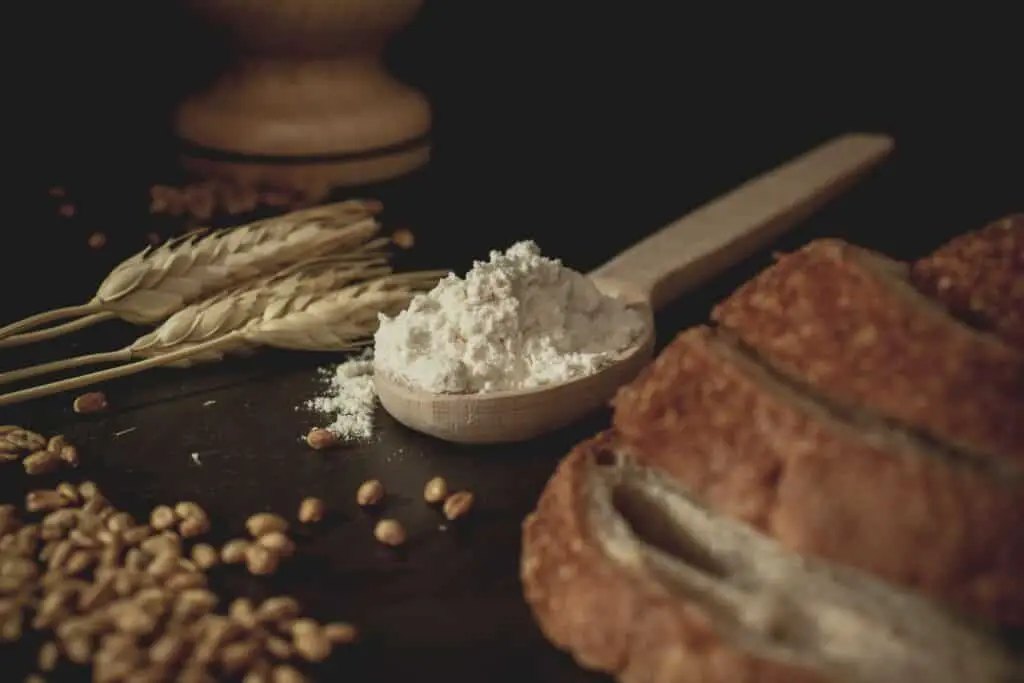Whether you have an allergy or you just want to try gluten-free flour, knowing the basics of gluten-free flour is important before you buy it and start using it. Gluten-free baking or eating can be different than baked goods that have gluten. Your first time using the flour or eating something made from the flour might be strange.
Some people find the taste and texture completely different, while others find that they’re the same. It really depends on what brand you buy. Finding the right brand and recipes can be a trial-and-error process.
No matter why you might be switching to gluten-free, use this guide to know everything you need before buying it.

What is Gluten-Free Flour?
Gluten-free flour is applied to all flours that are made of non-gluten-containing products. There are many kinds of gluten-free flours these days and you can find them at most supermarkets. All-purpose gluten-free flour is an easy-to-use replacement for any recipe that calls for wheat flour.
Gluten is a protein found in most flour including wheat, rye, and barley. Gluten-free flour is less elastic and denser than regular flour. For this reason, gluten-free flour mixes are often mixed with many different kinds of gluten-free grains to get a more consistent and versatile product.
Gluten-free flours you buy from the supermarket might have a combination of many different things including:
- Teff flour
- Tapioca flour
- Sorghum flour
- Potato starch
- Garbanzo flour
- Buckwheat flour
Flours can also be a combination of nut flours. These are usually made from really fine almonds or other nuts. They might also add in xanthan gum as a binder so the flour doesn’t fall apart and can bind together easier.
Increased Use of Gluten-Free Products
You have probably seen the increase of gluten-free products lately on media or seen the increase in the number of products in your local store. One of the main reasons gluten-free products are becoming more and more popular is because of the rise in allergies.
Many people are gluten intolerant, and they are unable to properly digest foods that contain gluten. This allergy can start as a child or develop as a person grows into an adult. People who have gluten insensitivities need to stay away from all foods that have gluten. Using gluten-free flour is one way they can eat baked goods, pasta, and other items.

You may also see more gluten-free items on restaurant menus as places are trying to accommodate people with allergies. Another common reason why people are switching to gluten-free products is because of the emergence of celiac disease.
Celiac disease is an autoimmune disorder and has to be avoided at all costs. Even a small amount of gluten can cause people with celiac disease to be sick for a few days. People with celiac choose to buy gluten-free flour so they can still enjoy cakes, muffins, and other baked goods.
More and more people are also choosing to switch to gluten-free because it’s said to be healthier and provide some nutritional benefits over traditional wheat.
Gluten-free flour can help free many people from symptoms such as impaired immune function, chronic fatigue, and depression.
Historical Background of Gluten-Free Flour
Gluten-free flour and bread started in the 1990s. This was after doctors and dieticians told people that eating a diet high in fat was better than eating carbohydrates. People quickly got tired of only eating meats and other things though and started to miss bread and other baked goods.
Food processors and health experts begin to make gluten-free products to help people who were looking for healthy alternatives and still wanted to eat baked goods.
Celiac disease was discovered in children in 1908 which made people start looking for alternatives for their children who were having gluten sensitivity issues. However, gluten protein wasn’t found to specifically be the cause of celiac disease until 1952.
Gluten sensitivity also started to rise in the late 1900s. Foods still didn’t begin to have gluten-removed through until the beginning of the 20th century. The gluten began to be replaced with other additives.
In the ancient world though, grains had gluten. However, people during this time may have eaten more meat and vegetables which is why celiac disease and gluten intolerance might not have been as common.

How is Gluten-Free Flour Made?
The process of making gluten-free flour depends on what kind you buy. Almond flour for example is made by grinding almonds into a very fine powder. Buckwheat flour is gluten-free despite the word wheat being in it. Flours like buckwheat are processed and packaged much like regular flour.
They are ground and pressed on until they become a very fine powder. You need to make sure that all gluten-free flours are certified gluten-free and are not cross-contaminated. If you are cooking or baking for someone with celiac disease, you need to be careful that the flour is not cross-contaminated.
All kinds of gluten-free flour are made from products that naturally do not contain gluten such as nuts, garbanzo beans, or buckwheat.
What Does Gluten-Free Flour Taste Like?
The taste of gluten-free flour depends on what kind you buy. You might find that you like almond flour but hate coconut flour. It depends on your personal taste preferences or the taste preferences of the people you are cooking for.
Keep in mind though that gluten-free powder almost never tastes the same as wheat flour. You will probably be able to tell the difference when eating something made from gluten-free flour. It might take you some time to get used to the new tastes.
You can also try many different kinds of flour before finding one you really like. If you don’t like nutty flavors, you might want to stay away from almond flour. If you don’t prefer the taste of coconut, you might want to stay away from coconut flour.
The taste will also depend on what you make. Baking with gluten-free flour will taste different than if you roll the meat in the flour. Some flours might taste better in certain recipes than others.
Most people find that the texture of gluten-free flour and products are the main difference rather than the taste. Gluten-free products are often more crumbly or sticky than flour with gluten.
What Does Gluten-Free Flour Smell Like?
This also depends on what kind of flour you buy. Some will have a stronger smell than others. The xanthan gum in the flour will also cause it to smell differently than other flours that have gluten in them.
If you notice the bread or flour smelling much differently than what you’re used to though, the flour might be bad. Make sure to check the expiration date on the bag if you think it might be bad.
Some flours, such as tapioca flour, tend to smell much stronger than other kinds of flour. Once you get used to the smell though, you won’t even notice it.

Why is Gluten-Free Flour Different from Other Types of Flour?
The main difference is, of course, gluten-free flour is gluten-free. This will make the taste, texture, and smell different than what you might be used to. Gluten-free flour is also higher in protein and fiber. This makes it better for yeasted recipes as the flour won’t rise very quickly.
Gluten-free flour doesn’t always work as a direct substitute for regular flour. Sometimes you might need to use more or less gluten flour. Always research online the flour you bought and the recipe you are using. Make sure you are using the correct measurements.
Sometimes the gluten-free flour might also call for more eggs, more milk, or less of a particular ingredient. Using gluten-free flour the first few times can be a lot of trial and error.
Is it More Costly than “Regular” Flour?
Gluten-free flour is often more expensive than regular flour. The ingredients you might need to add to the gluten-free recipe are often more expensive in many cases as well. Gluten-free flour might also be readily available depending on where you live and the supermarkets near you.
You might need to do some extra driving or shop online and pay for shipping costs. Cooking and baking gluten-free often costs more than regular baking in many aspects.
What are Some Substitutes for Gluten-Free Flour?
There are many baking substitutes if you want to go gluten-free. Sixteen of the most common gluten-free flours are:
- Buckwheat
- Millet flour
- Sorghum flour
- Amaranth flour
- Black beans
- Chickpea flour
- Coconut flour
- Teff flour
- Cassava flour
- Almond flour
- Arrowroot
- Potato four
- Potato starch
- Brown rice flour
- Sweet rice flour
- Tapioca
- Ragi flour
Final Thoughts on Gluten-Free Flour
Baking gluten-free and using gluten-free flour is a popular choice for those who want to try something new, those who have a gluten intolerance, or those who have celiac disease.
